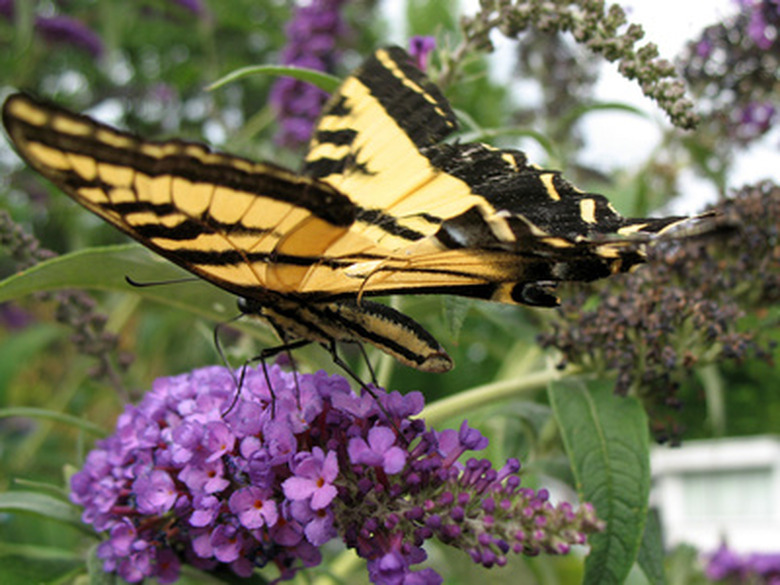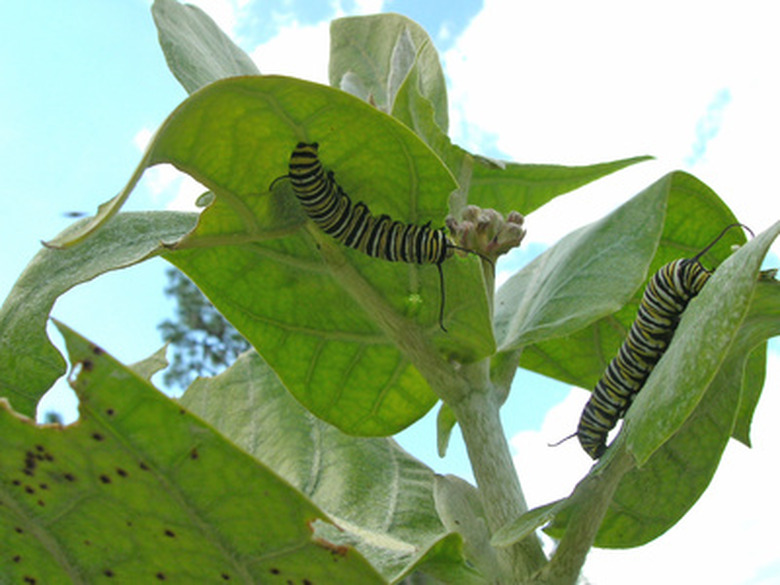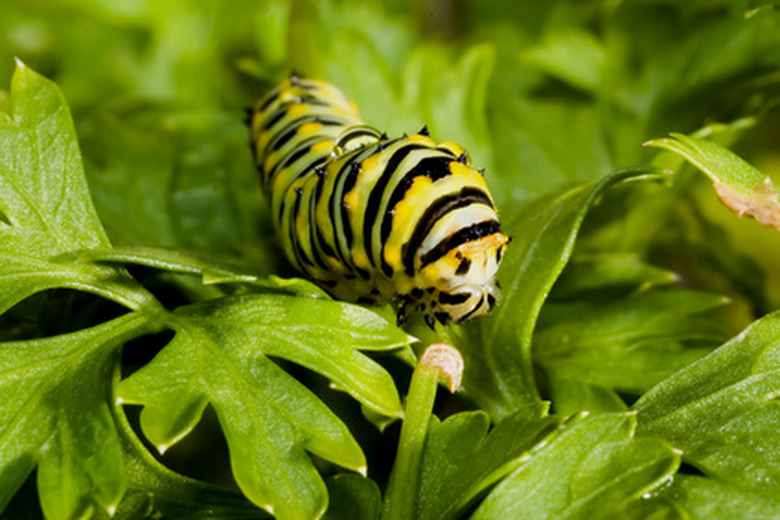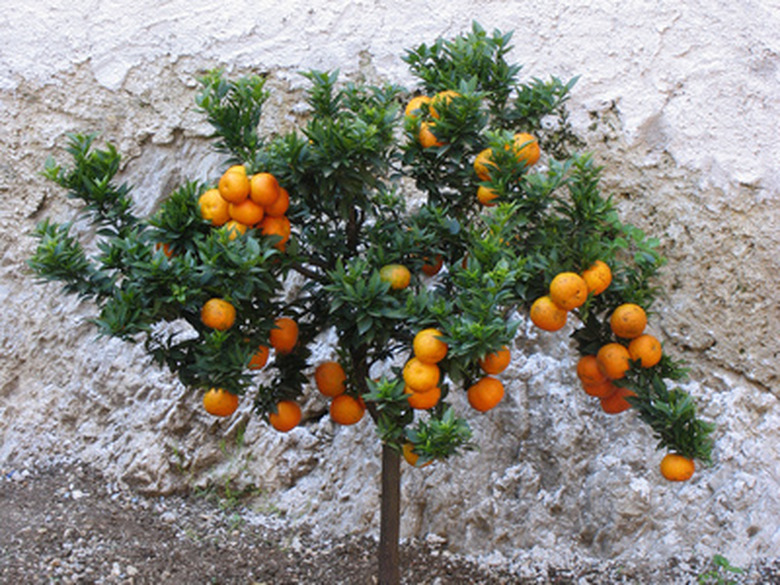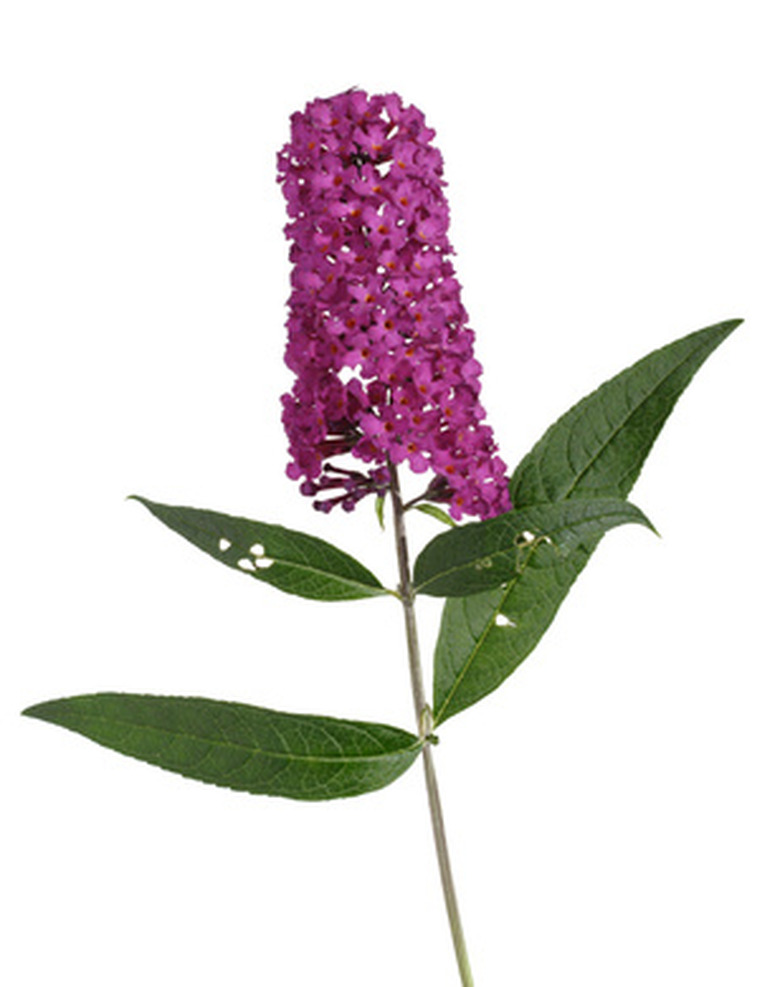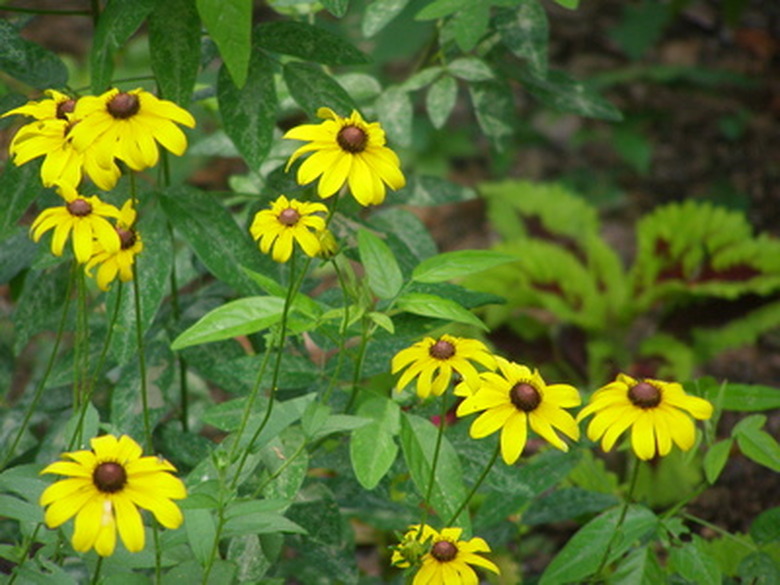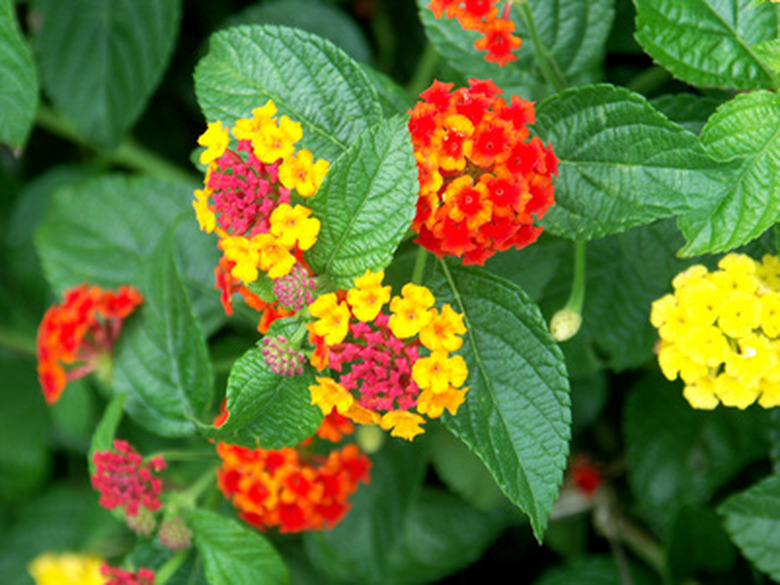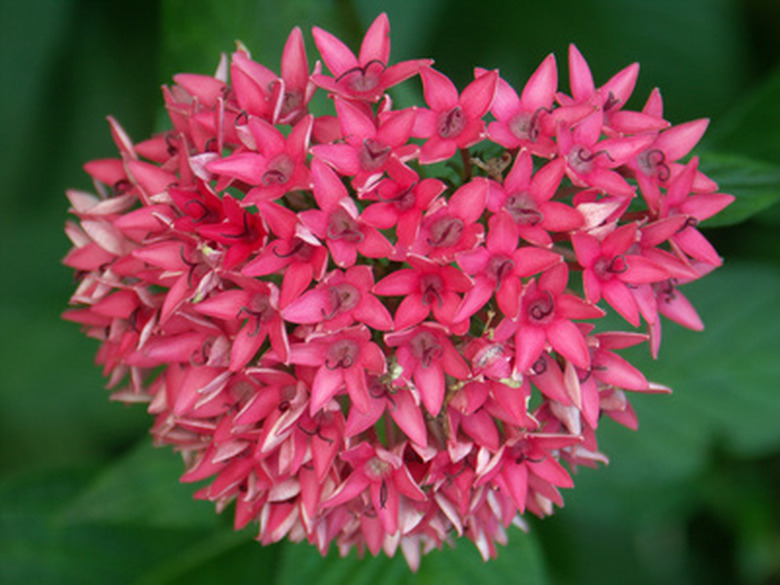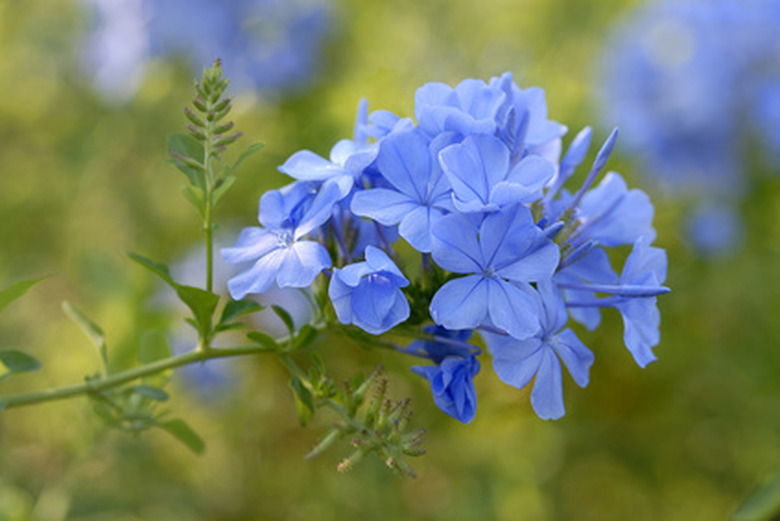Top 10 Butterfly Plants Of Georgia
Butterflies have a fascinating life-cycle that one can observe from beginning to end over the course of a few weeks. Georgia gardeners from the USDA Hardiness Zone 6 all the way south to Zone 9A can easily draw butterflies to their property by selecting the right combination of plants.
Milkweed
Milkweed is hardy throughout Georgia and is the primary food source for Monarch caterpillars.They will eat every leaf off the plant and even nibble on stems. Don't worry, because the plant will recover over time. The Milkweed sap is toxic and causes caterpillars to be unappetizing to predators.
Milkweed also supplies nectar to the mature butterflies. When planted in a sunny location it spreads dramatically and makes an attractive background plant in perennial gardens. Milkweed seed pods release seeds through the air at the end of the season. Simply relocate plants that sprout in unwanted areas.
- Butterflies have a fascinating life-cycle that one can observe from beginning to end over the course of a few weeks.
- The Milkweed sap is toxic and causes caterpillars to be unappetizing to predators.
Parsley
Parsley, an easy-to-grow herb, is a food source for Black Swallowtail caterpillars. They strongly resemble Monarch caterpillars without the black antennae. In late spring and summer one can watch butterflies land on leaves and deposit eggs resembling tiny yellow marbles. They will hatch, and you might have more caterpillars than you think. The characteristic stripes and caterpillars themselves are hardly visible during the first few days after hatching.
Citrus Trees
Georgia gardeners from USDA Zone 7 to 9 are able to attract butterflies with citrus trees. The Meyer Lemon is one of the most cold-hardy citrus hybrids, but butterflies are not discriminate. Great Swallowtail butterflies lay eggs on tree leaves and the emerging larva feast on them. This ugly duckling of a caterpillar is shiny with unattractive markings that cause it to resemble bird droppings.
- Parsley, an easy-to-grow herb, is a food source for Black Swallowtail caterpillars.
- This ugly duckling of a caterpillar is shiny with unattractive markings that cause it to resemble bird droppings.
Many people make the mistake of thinking that this caterpillar will cause permanent damage to a citrus tree, and so they kill them. The citrus tree will respond to caterpillar defoliation by growing. Patient gardeners will see new leaves and butterflies.
Butterfly Bush
The butterfly bush, Buddleia, is hardy from USDA zone 5 to 9 and comes in colors ranging from white to a deep violet. This sun-loving sprawling perennial can reach 8 to 10 feet tall and wide. If you have the space and well-drained soil, Butterfly Bush will attract monarchs, mourning cloaks, red admirals and tiger swallowtails.
Although the Butterfly Bush attracts many different species of butterfly, it is not at the top of the list due to its propensity for getting powdery mildew.
- Many people make the mistake of thinking that this caterpillar will cause permanent damage to a citrus tree, and so they kill them.
- The butterfly bush, Buddleia, is hardy from USDA zone 5 to 9 and comes in colors ranging from white to a deep violet.
Black-eyed Susan
The golden yellow and brown blooms of Black-eyed Susan are attractive to the Great Spangled Fritillary. Black-eyed Susans will grow throughout Georgia and bloom repeatedly through summer and early autumn. Removing spent blooms will encourage this. They can also be divided in autumn and relocated to other sunny areas that need color.
Autumn Sage
Autumn sage is a perennial hardy to Zone 7. It blooms in pink, red, white and coral. Autumn sage attracts the cloudless sulphur butterfly. Use its airy appearance to soften structured gardens and create a meadow feel.
- The golden yellow and brown blooms of Black-eyed Susan are attractive to the Great Spangled Fritillary.
- Black-eyed Susans will grow throughout Georgia and bloom repeatedly through summer and early autumn.
Cigar Plant
The cigar plant attracts the cloudless sulphur, and it can grow to be 4 feet tall and wide. In the most southern areas of Georgia, teetering on Zone 8b and 9, Cigar Plants will often survive through winter. It tolerates hot sun and puts on a show of tubular orange and yellow blooms in the fall. For those who also wish to attract hummingbirds, this plant is a must-have.
Lantana
Lantana is probably the most common plant grown to attract butterflies in Georgia. According to Gardening in Georgia's Walter Reeves, it is treated as an annual in Atlanta and more northern areas of the state. Farther south, lantana is a reliable drought-tolerant perennial. New hybrids emerge every year, and that means that one can easily find a size and color to suit their garden design. For example, 'New Gold' Lantana grows a low yellow carpet of blooms. It's excellent for the edges of sunny beds. Larger hybrids like 'Cosmos' must be heavily pruned back every year to prevent them from taking over a garden.
- The cigar plant attracts the cloudless sulphur, and it can grow to be 4 feet tall and wide.
- In the most southern areas of Georgia, teetering on Zone 8b and 9, Cigar Plants will often survive through winter.
Pentas
Pentas attract the eastern black swallowtail. Georgia's Zone 8b and 9 enjoy it as a perennial. Keeping it well-watered during freezes will encourage its survival. There are small varieties that grow to be about fourteen inches tall and larger ones that reach four feet in height. Like Lantana, Pentas come in a range of colors each equally effective at attracting butterflies. Allow good air circulation and fertilize regularly for best appearance.
Plumbago
Gardeners love plumbago for its blue-and-white blooming varieties. It attracts the common blue butterfly in both larval and adult stages. It is hardy from zones 5 to 9 and has the added bonus of being deer resistant. Once established, it is a tough plant that offers large clusters of flowers all summer long. Avoid planting in poor draining soil or where its roots will be disturbed by nearby digging.
- Pentas attract the eastern black swallowtail.
- Like Lantana, Pentas come in a range of colors each equally effective at attracting butterflies.
